Kindergarten School Rules and Classroom Rules are exactly how you should start your year. In the FIRST month of school, you are going to break down your class rules for your students, many of whom have never been to school or in a structured environment. And perhaps you are asking yourself what are the most important rules in school?
Kindergarten School Rules and Classroom Rules
Teaching Kindergarten School Rules and Classroom Rules is more than just a good teaching practice, it is a standard. One of the Kindergarten Social Studies Standards (Citizenship) in Georgia states, the student will learn “How rules are made and why they should be followed.”
Digging a little deeper, Kindergarten School Rules and Classroom Rules is a topic the teachers of younger grades cover over and over again. It is a standard I teach and reteaches all year long as I grow my kindergarteners into problem-solving individuals. After all, some problems can be solved differently in February when we learn more friendship skills than they can be in August when we are simply adjusting to the structure and routine of our school.
The Break Down of School Rules and Classroom Rules
The three lessons I teach every August are contained exactly in the standard above. That is right.
THREE lessons from that one standard. I have to break this one section down into
1. What are rules?
2. How are rules made?
3. Why should we follow them?
We also have bonus lessons for classroom management that cover more topics this veteran teacher knows you will find super helpful.
The Golden Rule (And It Isn’t Do Unto Others)
The golden rule in Kindergarten is: Assume nothing. This goes for school rules and classroom rules. This means that the teacher can not assume my class even understands what a rule is, to begin with.
Additionally, I don’t try to teach this lesson on the first or second day of school. Around the third day of school, which is most likely as soon as we are ready for this lesson,
Lesson One: What Are Rules?
When we begin teaching about School Rules and Classroom Rules, I break out my first lesson which focuses on What are Rules?
Here is a group chart that is already filled out, as well as a blank one to complete as a class,
to lead a discussion about what are rules. I like to use my smart board with the blank version,
but a paper chart is an excellent option as well.
Next, we also work on this pocket chart sorting activity. I like this activity because each teacher/school/ even group might have different RULES they have to address and follow. Don’t get me wrong MANY if not all of us have similar rules such as feet and hands to yourself. You can use the cards that relate and apply to YOUR needs only.
Lastly, we have a Good Rules to Follow printable. This is a PERFECT activity to send home as homework for great interaction between the parent and student. I created several versions of this printable including one with graphics only so you can add your SPECIFIC class rules. There is also a version that is completely blank so you can make it exactly as you desire.
Talking Through Situations
Young students often struggle with specific situations and how to handle them. Remember, many of our Kindergarteners have never been to school or perhaps around such a variety of other students. Walking students through situations is a strong way to lead them to success in similar situations.
I also LOVE the printable showing situations at school such as work time and student match the YES behavior and NO behavior to it. This is a great collaborative activity to make sure your kids understand
the right and wrong way to act when rules are concerned. Our students at the beginning of the year can’t read much or any at all, right?!
Lesson Two: How are Rules Made?
Now that we have discovered what a RULE is, we can talk about how they are made. This is the next step of Kindergarten School Rules and Classroom Rules. Some schools have set rules given for everyone to follow. Some teachers are allowed to create specific rules for their classes. But, the question (and standard for that matter) remain, How are RULES made?
Ideally, the class makes the rules together. We also have to create new rules for some classes that have never been an issue before. When a situation arises, I sit down WITH my class to create our new rule.
We talk about what happened, leaving out names. We decide on a way to solve the problem if it happens again… AS A CLASS.
And sometimes things happen in the school, not in my classroom, that dictate new rules that our administration needs. One example I can think of was bathroom behavior. If some students are acting up in the restroom, our principal may give a new direction such as using one squirt of soap.
Here is a sorting activity to help sort the brains of our little learners to understand how rules are made. And the best part is, there is NO ONE RIGHT ANSWER. You can help direct the learning activity and how it is done in your exact situation.
Next, I have a lesson that is a MUST DO very quickly in the school year and it is ideal to keep around to reteach as needed. This is the exact lesson I WISH I thought to teach my kids before a situation arose
during my first year and second year and third year of teaching.
Lesson Three- When Should I Tell the Teacher
This lesson is on When Should I Tell the Teacher? There is a set of charts, of course. As well as a pocket chart activity to guide your instruction. You can talk about each situation and what you want your students to do when that happens.
You can teach with this set. And you can reteach it as well. I purposely have this part of Lesson Three for Kindergarten School Rules and Classroom Rules taught first and for a good reason. Students need to know that you are there for them in many situations, like if they are sick, scared, or need help solving a problem.
Sometimes YOU Need to Know Things
BUT. Here is the big topic I know you will need to teach next because it is what students should do before they tell the teacher. I know, I know… you are welcome!
This section allows you to break down ways to solve problems before a student needs to come to talk to you. I highly recommend covering WHEN they should tell a teacher first. This way your class knows sometimes they SHOULD come to you first.
Furthermore, this is not a lesson to make students learn to not come to you, but instead, empower them to stand up for themselves or others when it is needed. Here are the sorting cards for things they can do before they have to tell the teacher.
My favorite activity of the whole pack is this printable. It covers classroom situations and gives your students three choices:
1. Talk to their friend.
2. Walk away
3. Talk to a teacher
I know this is an ideal class discussion for each and every classroom to have.
This isn’t for once a year!
Every veteran teacher will affirm that students get comfortable with each other around December
and start to forget how to be a great friends. This is when we step in as leaders in the classroom to reteach a lesson or change the structure of how we handle friendship situations.
This is why I took the time to create a section on Sharing or Taking Turns.
The two concepts are similar BUT not the exact same. Here is a sort of thing that we can share as well as things we can take turns with. Ask your class to sort the cards FIRST to get an idea of how well they understand the two ideas.
There are plenty of options for classroom-specific things as well, such as tablets. It is worth the class time to dive into these topics so that there is a firm understanding of rules and how to follow them in the classroom. It is invaluable to be proactive to address these issues in your classroom.
Glossary Included
Lastly, there is a glossary as well are definition cards. I printed the 6 glossary terms on the page here. This would be ideal to send home in an agenda or as an additional character education lesson for a child who missed it. Or for those who need to be retaught.
Management Tools Included
One thing many people LOVE about the Print & Play Packs is the color coding. Here is one of the lessons from this pack.
All the border colors MATCH for easy sorting.
Additionally, you can coordinate the lessons with matching baggies.
Here is a look at all 5 of the COLOR CODED lessons included in the School Rules Pack.
I simply print the pack, cut out the sorting pieces, copy the printables as needed, and my class is ready to play! This whole pack of Kindergarten School Rules and Classroom Rulesis this easy to organize and fits into a file folder ready to go!
-
Product on saleSocial Skills$10.40
-
Choices$5.00
-
Classroom Rules and School Rules$5.00
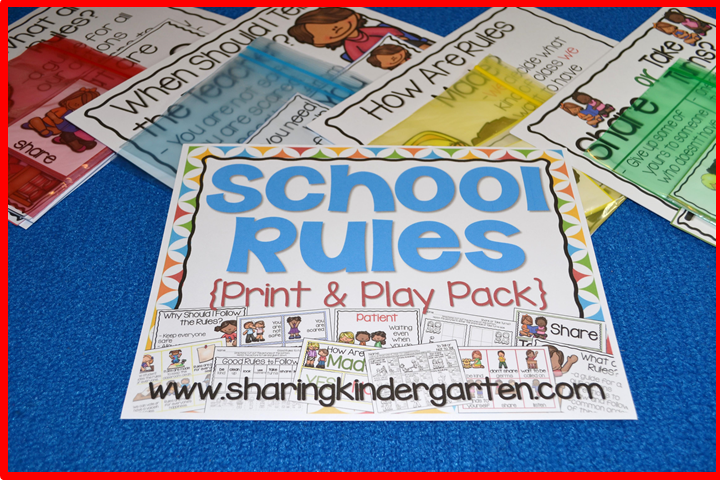






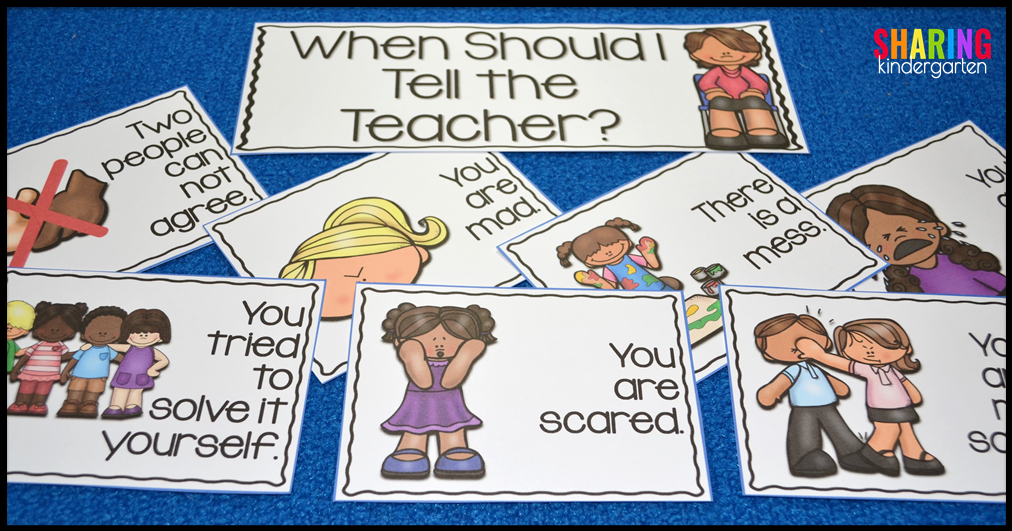

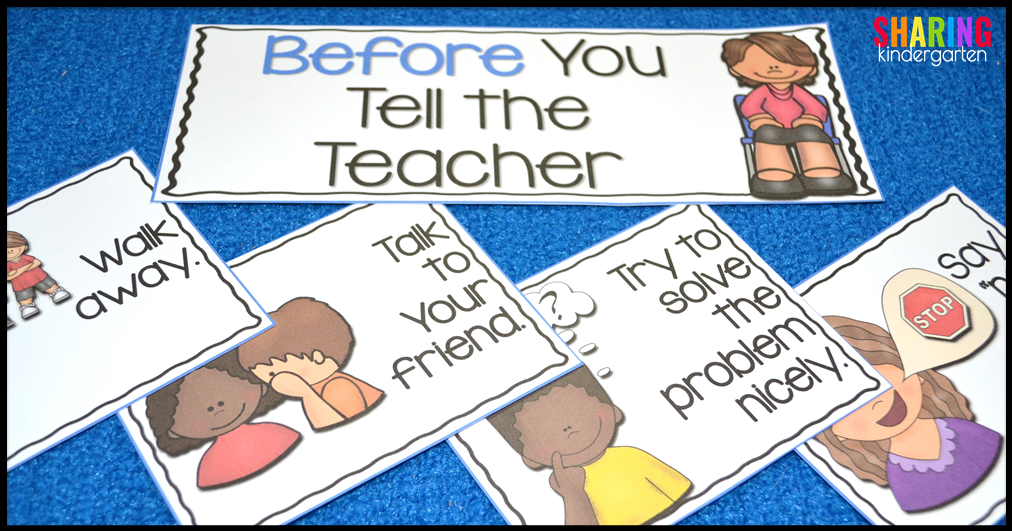
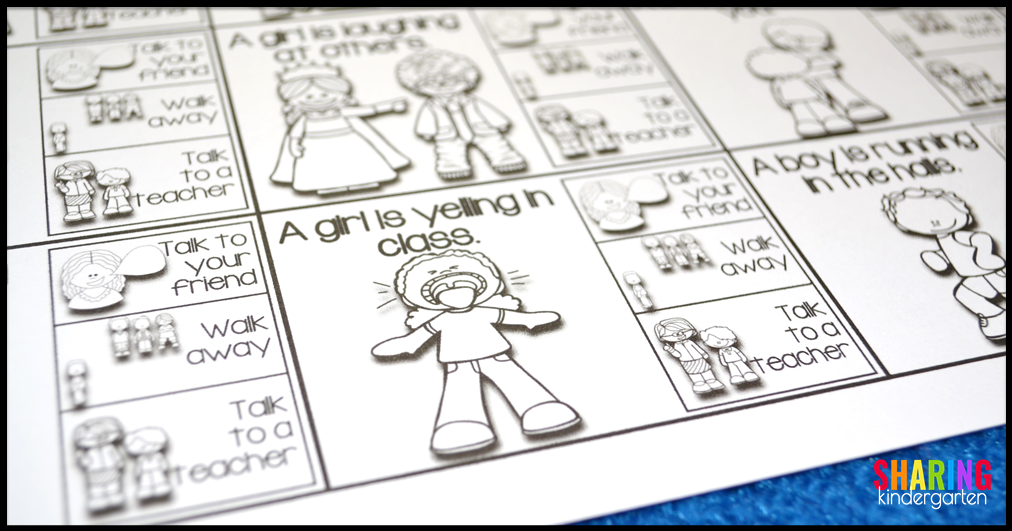
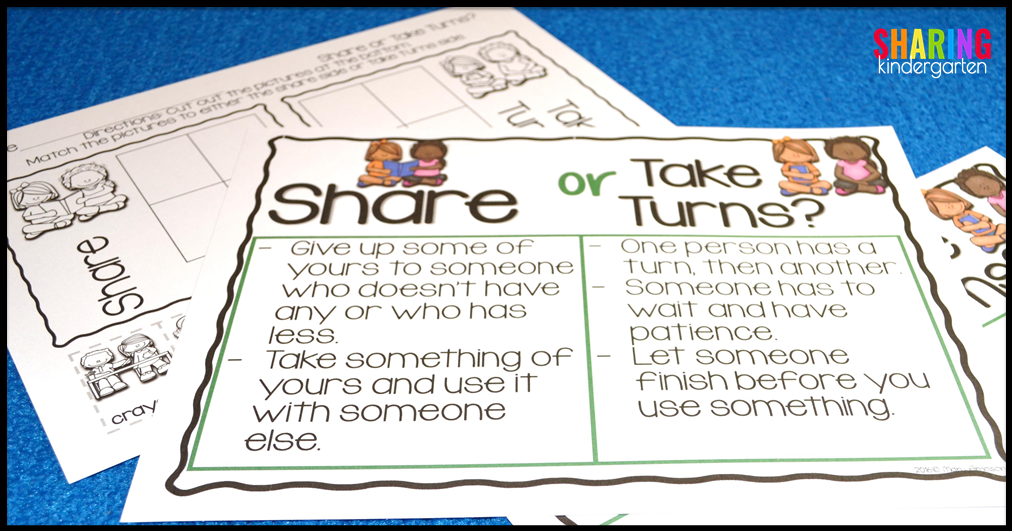
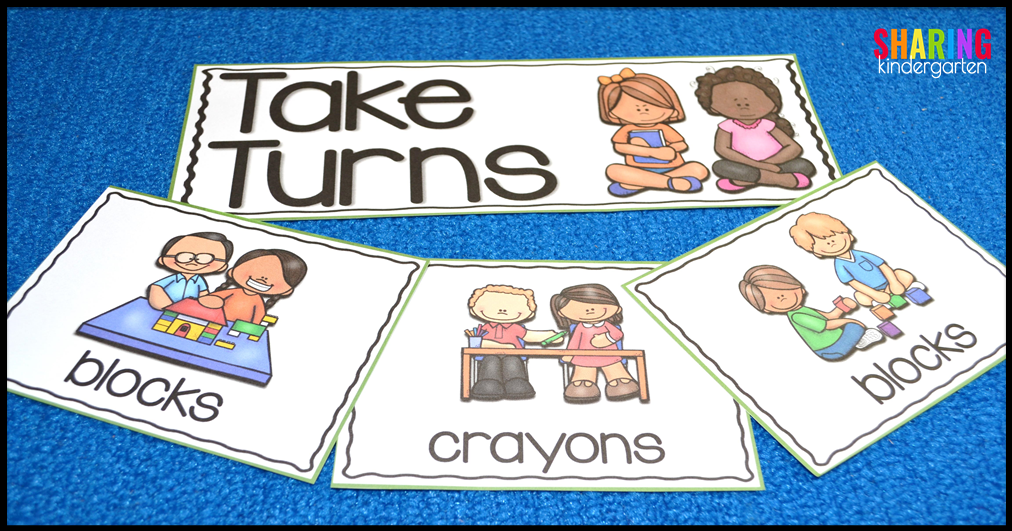
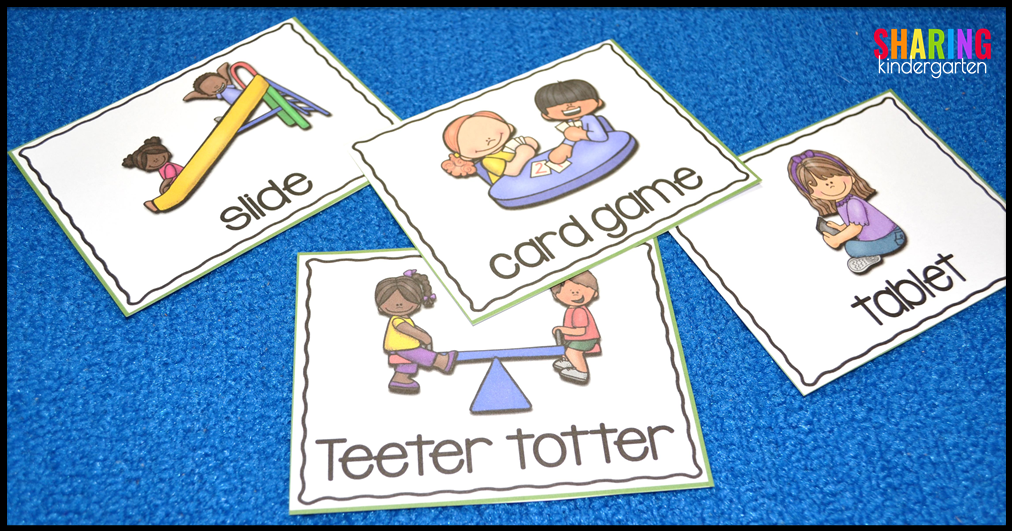
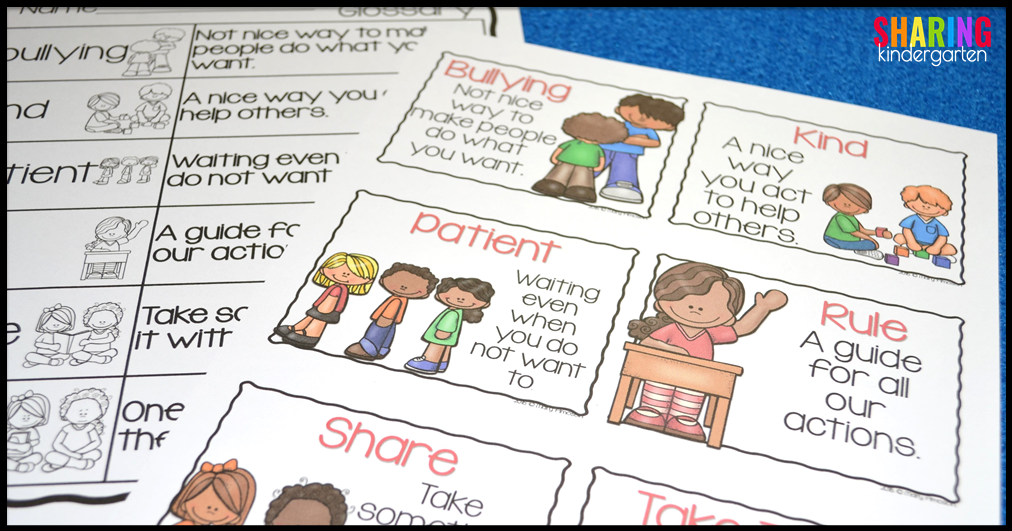
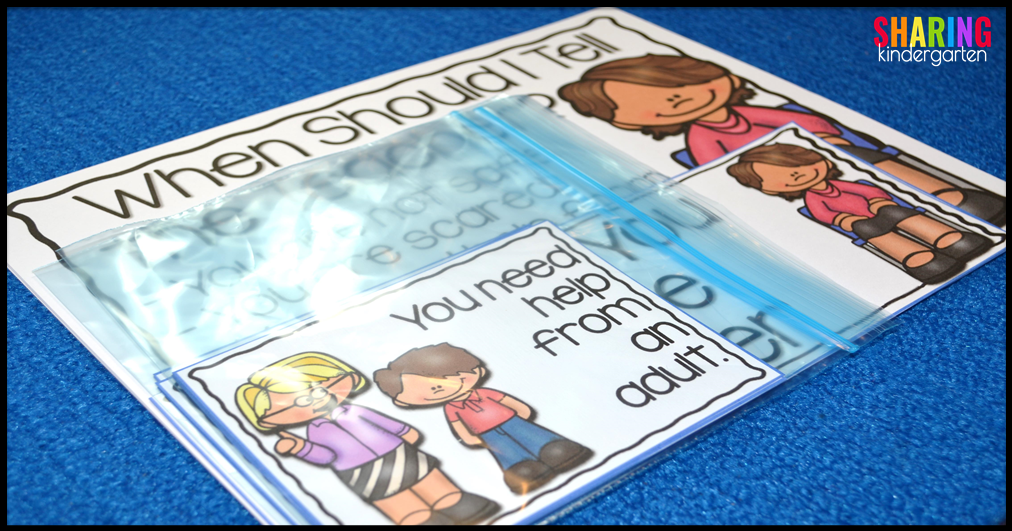
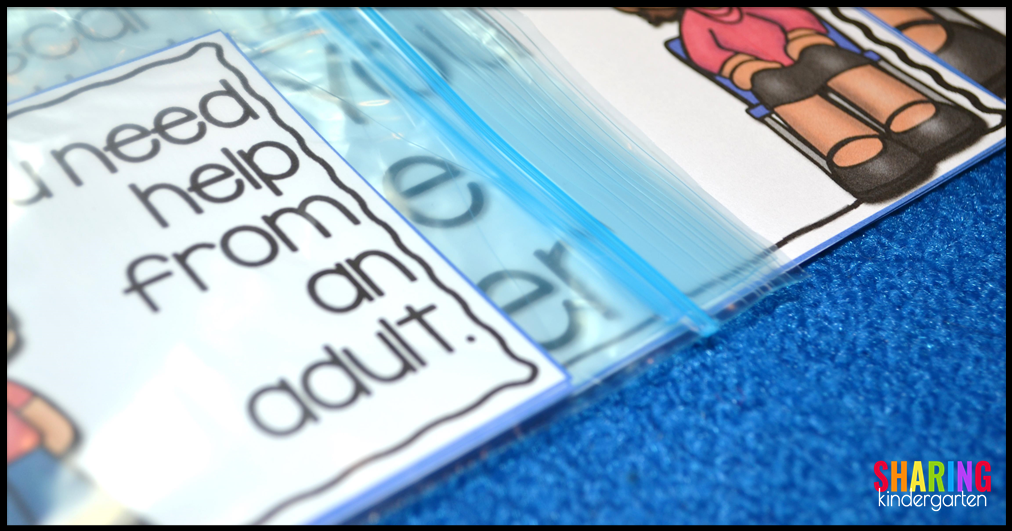
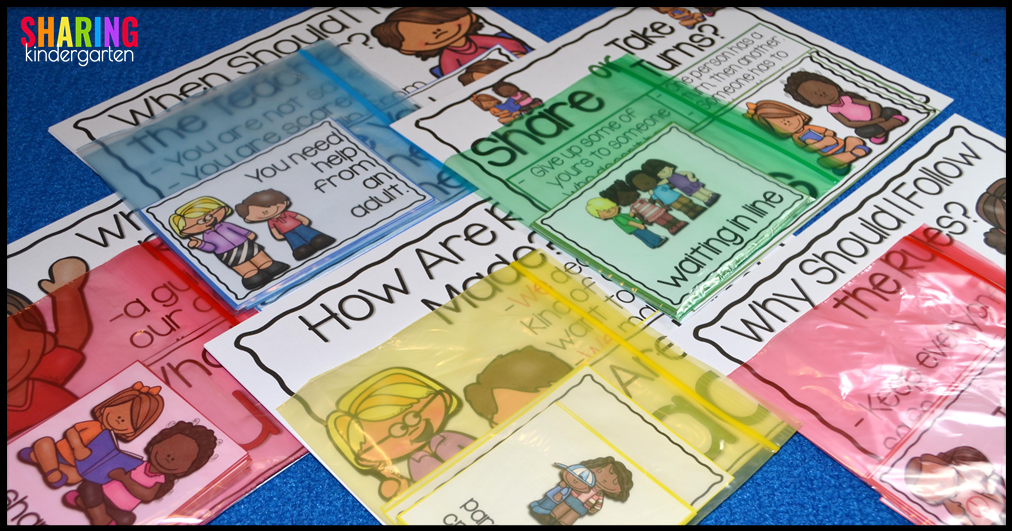
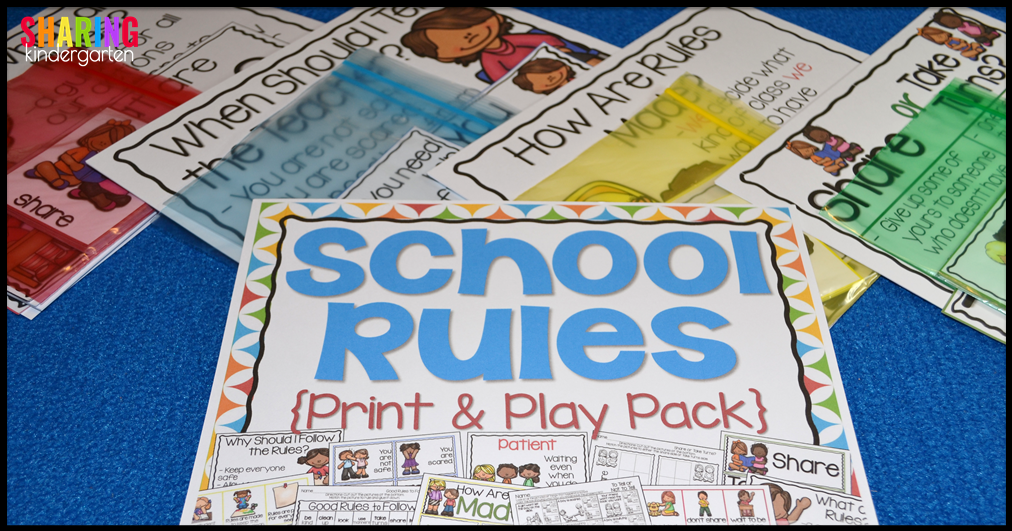
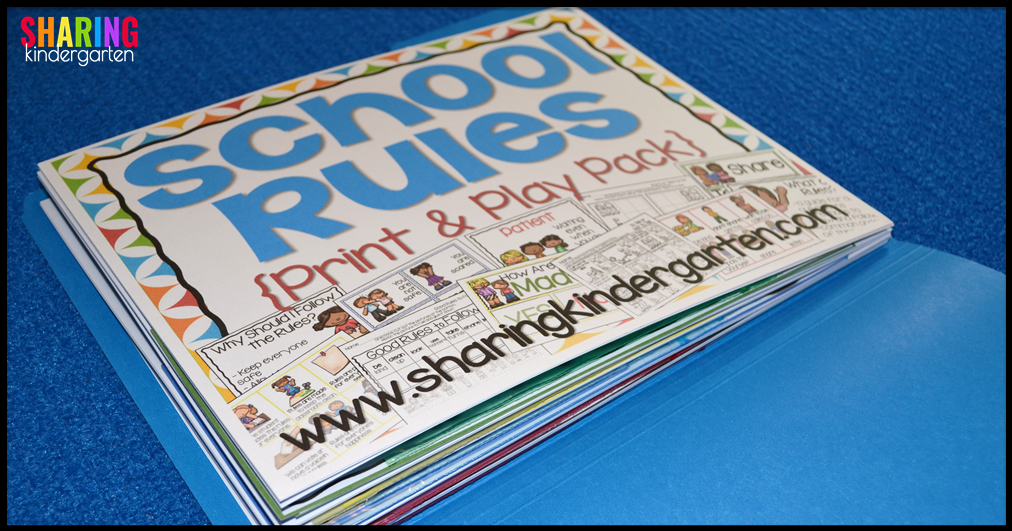
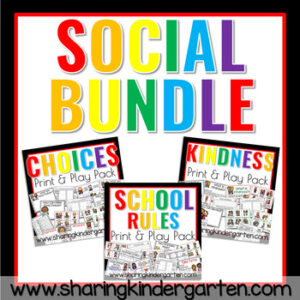
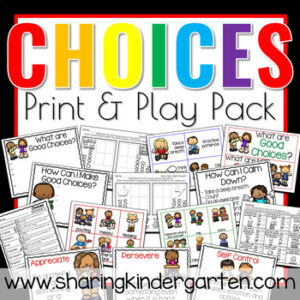
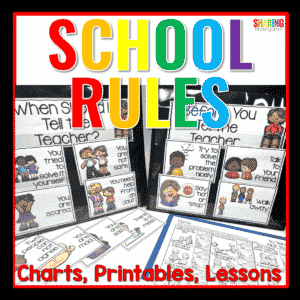

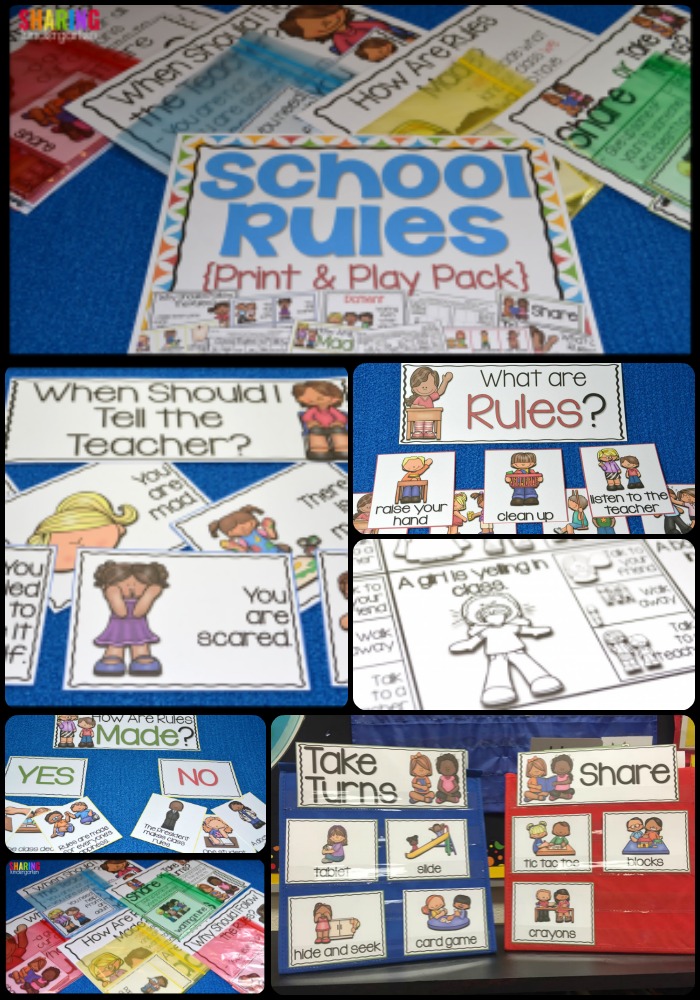
Where can I find your school rules pack? The link does not work